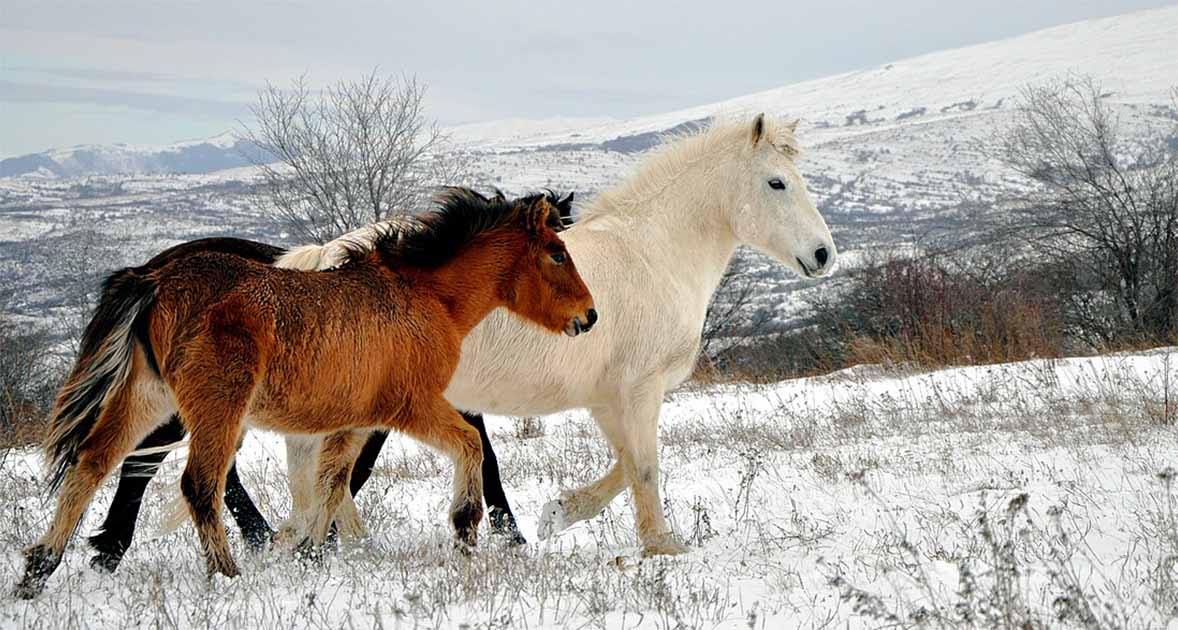Europe’s Pagans Imported Horses to Sacrifice… and They Got Them From Christians
Horse sacrifices were a mainstay of pagan rituals across the Baltic. The archaeology leaves no doubt: from the 1st to 13th centuries AD this pagan belief scarcely wavered in popularity: even the loss of such an important animal was worth it to please your Dark Age gods.
Obviously, the ancient Baltic tribes needed a constant supply of horses for their ceremonial sacrifices. And, according to a new study published in the journal Science Advances, we now know where they got them. The last of the pagan Balts were buying their horses from Christian Scandinavia.
- King Aelle and the Blood Eagle: Ritual Sacrifice in Viking Age Britain
- Horses as Symbols of Power in History and Mythology

The new research is based on multiple pagan sites of horse sacrifice, in Lithuania and beyond (French et al / Science Advances)
Archaeological digs for many years have revealed horse remains alongside human burials. This new study has also prompted a reassessment of the importance of such cemeteries as a central focus in Baltic sacred landscapes.
Many Differences, But Always Horses
The perennial problem with such sacrificial remains is one of inconsistency. So called “offering pits” might include parts of a horse, an entire horse, or in some cases multiple horses. The arrangement of the animal(s) is also highly varied: some are crouched, some laid out, and some appear to have been torn apart. Some may even have been buried alive.
Sometimes horses were buried alongside humans, sometimes separately. Sometimes the humans or horses are cremated, sometimes not. Sometimes riding equipment was included, and sometimes evidence is found of complex ritual interment. All that really remains consistent over the method, which lasted for more than a thousand years, is that a horse was seen as an important sacrifice.
- The Heathen Hof: Resurrecting a Germanic Pagan Temple
- Jousting Horses Ridden by English Knights Came from Mainland Europe

Analysis of these horse burials has shown that the pagans sourced their horses from Scandinavia, and that it was the value of imported horses which may have been key in determining their use for sacrifice (French et al / Science Advances)
However some aspects of the ritual were thought to have remained the same. Sacrificed horses, with extremely rare exceptions, were believed to be male. This may be due to association of the horse sacrifice with a masculine, warrior culture, as some surviving contemporary texts suggest, or it may have been due to the practical value of a breeding mare in such populations.
The second consistency comes from the breeds used in the sacrificial rites. These were always thought to be local breeds of horse, most commonly the forest tarpan (Equus ferus or Equus sylvestris) or Lithuanian breeds known as the žemaitukas.
But now this has been thrown into doubt. The new research suggests there may be much more variety in horse burials, and that any imported horses, rather than exclusively stallions, were preferred.
The location of the Balts and the Baltic region placed them on a natural trade route connecting Central Europe and Scandinavia to the Byzantine and Islamic world. The preference for which horses were used in the sacrifice may have much to tell us about how horses were traded along these trade routes, and how the pagans of the Baltic interacted with their Christian neighbors to the north and the west.
Analysis of the remains indicates that some of the sacrificed horses had come from Finland or Sweden, imported across the Baltic Sea from Christian kingdoms, some from as far as 1,500 km (930 miles) away. This is a surprise, as it was not previously suspected that such levels of interaction occurred.
As the study authors note, “these horses provide direct evidence for purported cross-Baltic horse trading or raiding starting during the Viking Age (41). In either case, our results prove that horses were crossing the Baltic Sea on ships, a level of mobility not previously recognized archeologically.” They also do not discount that these burials could have come from Finnish or Swedish pagans who persisted beyond the introduction of Christianity, although the location of such burials would still require further explanation were this the case.
The study’s principal author, Katherine French, goes on to note that this may change previously held beliefs about the sex of the sacrificed horse, as reported in Archaeology Magazine: “This research dismantles previous theories that locally-procured stallions were exclusively selected for sacrifice. Given the unexpected prevalence of mares, we believe the prestige of the animal, coming from afar, was a more important factor in why they were chosen for this rite.”
Clearly, however, this study has uncovered a far more nuanced trading relationship between the last pagans of Europe and their Christian neighbors. They may have worshipped different gods, but when it came to trading they thrived.
Top Image: New research has thrown into doubt long-held assumptions about the origin and the gender of horse sacrifices by the last European pagans. Source: Aljabakphoto / CC BY-SA 4.0.
By Joseph Green
References
French, K, et al, 2024. Biomolecular evidence reveals mares and long-distance imported horses sacrificed by the last pagans in temperate Europe. Available at: https://www.science.org/doi/10.1126/sciadv.ado3529
Radley, D, 2024. Medieval pagans imported horses from Scandinavia for last sacrificial rites in Europe. Available at: https://archaeologymag.com/2024/05/pagans-imported-horses-from-scandinavia-for-sacrificial-rites/
















